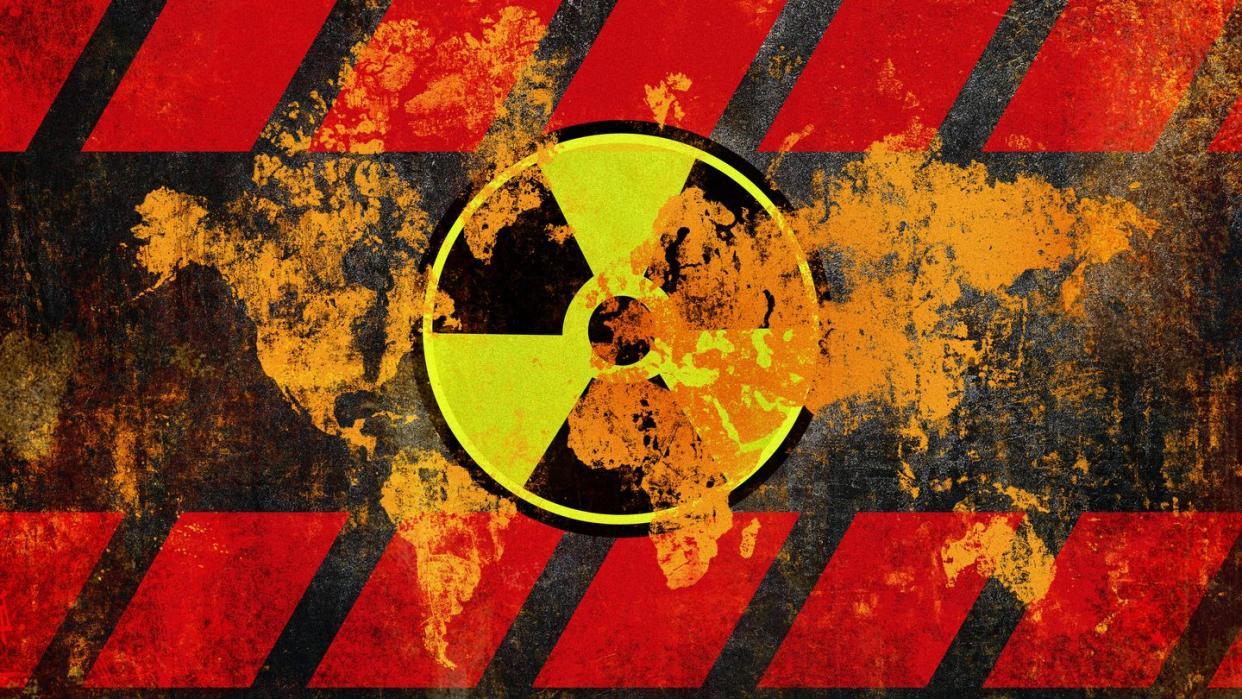Buried Nuclear Waste May Soon Rise From the Grave

During the Cold War, the U.S. stashed nuclear waste—or accidentally dispersed it—in several sites around the world.
The Government Accountability Office (GAO) recently released an update on three of those sites in Spain, Greenland, and the Marshall Islands.
Two of those sites are currently under threat from climate change in the form of either melting ice or rising sea levels, which could eventually reveal these dump sites’ deadly contents.
During the Cold War, the U.S. and Soviet Union had the bright idea to irradiate the planet with nuclear bomb testing.
Of the 67 U.S. nuclear tests during this period, Castle Bravo—conducted on the Marshall Islands on March 1, 1954—was the biggest of them all. This denotation, along with all the others, came with an ecological and human toll on the surrounding area. And now, during the era of climate change, the specter of the most dangerous era of the nuclear age is haunting the world once again.
A new report by the Government Accountability Office (GOA) re-evaluated three sites around the world contaminated by U.S nuclear waste. One of these sites included Palomares, Spain—in 1966, a U.S. B-52G bomber carrying four thermonuclear bombs collided with a KC-135 tanker in the area. The collision didn’t cause the bombs to explode (you probably would’ve heard about that one time we accidentally bombed Spain) but it did disperse a lot of radioactive material. The report finds that the U.S. and Spain continue to monitor the contamination to this day.
However, the nuclear waste sites in Greenland and the Marshall Islands are currently a more direct threat to the world due to climate change. Entombed in ice under Greenland is roughly 47,000 gallons of radioactive waste produced by the Portable Mobile-2A (PM-2A) reactor, which powered the “city under the ice” known as the U.S. Camp Century base. Although the reactor was removed, the waste was left behind. Simply put, engineers at the time never thought it’d be exposed, but climate change—a term that wasn’t even coined yet when the base was built in 1960—is slowly melting the ice cap, which could reveal the radioactive waste hiding below.
“The scientists concluded that the contaminants should remain entombed in the ice at least through 2100,” the report reads. “The radioactive isotopes will continue to decay while entombed in the ice sheet and, as a result, will be less of a threat to human health the longer they remain locked in the ice.”
However, of most pressing concern is the nuclear waste currently impacting the Republic of the Marshall Islands. Runit Island houses a “nuclear coffin” that contains 110,000 cubic yards of radioactive contaminated soil and 6,000 cubic yards of contaminated debris, and it’s already been documented that rising sea levels are impacting this coffin. Nuclear radiation can also be measured at several atolls as well, including swimsuit, Enewetak, Rongelap, and Utrik Atolls.
The U.S. Department of Energy and the RMI have disagreed over the impacts of the U.S.’s past nuclear testing on the people of this island, and the GOA believes that a new communication strategy could help alleviate mistrust—which isn’t exactly what the Marshallese people want to hear.
“What we need now is action and implementation on environmental remediation,” Ariana Tibon, chair of RMI’s National Nuclear Commission told the environmental website Grist. “If they know that it’s contaminated, why wasn’t the recommendation for next steps on environmental remediation?”
In other words, it's time for the U.S. to stare down the ghosts of its nuclear past.
You Might Also Like

